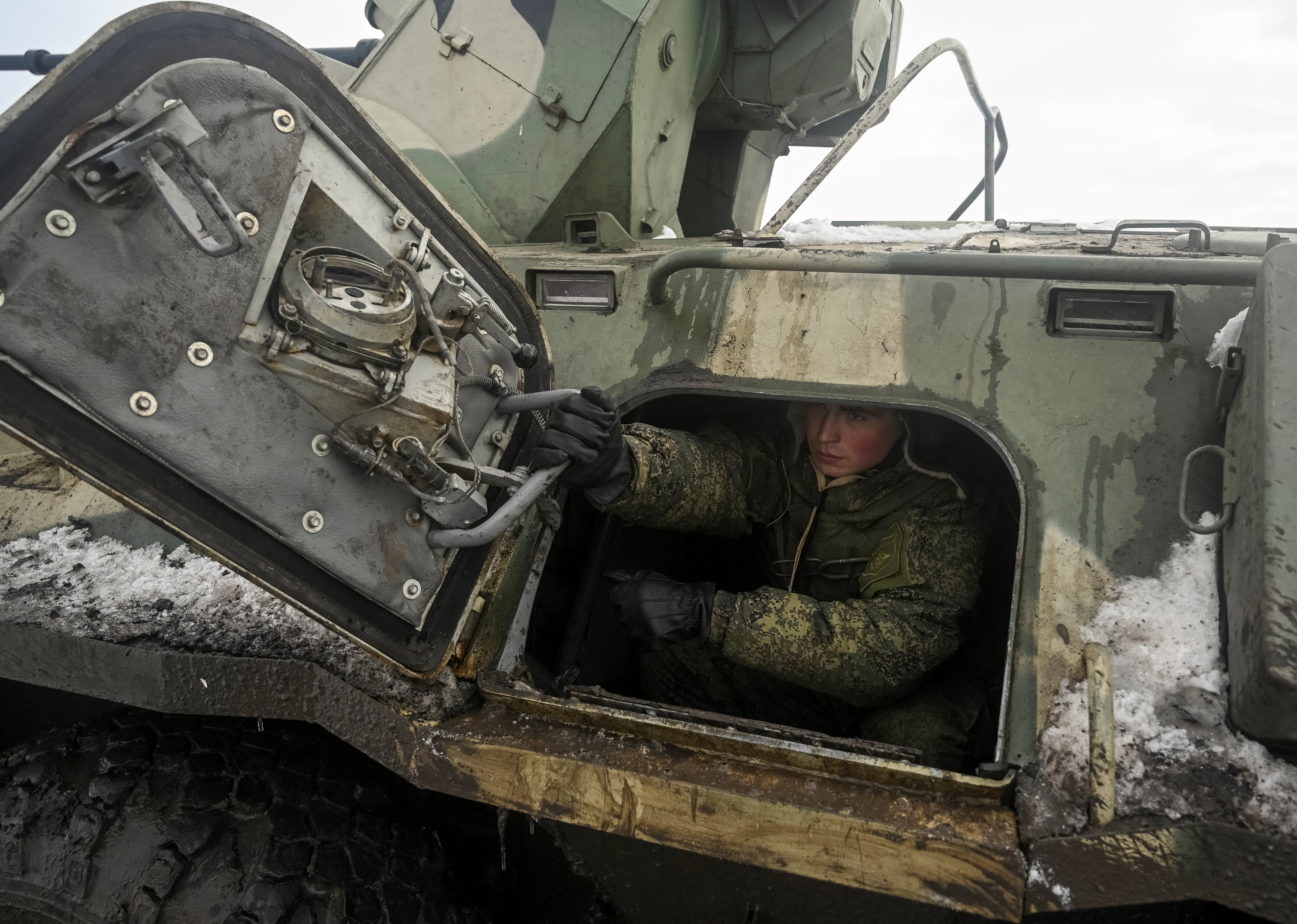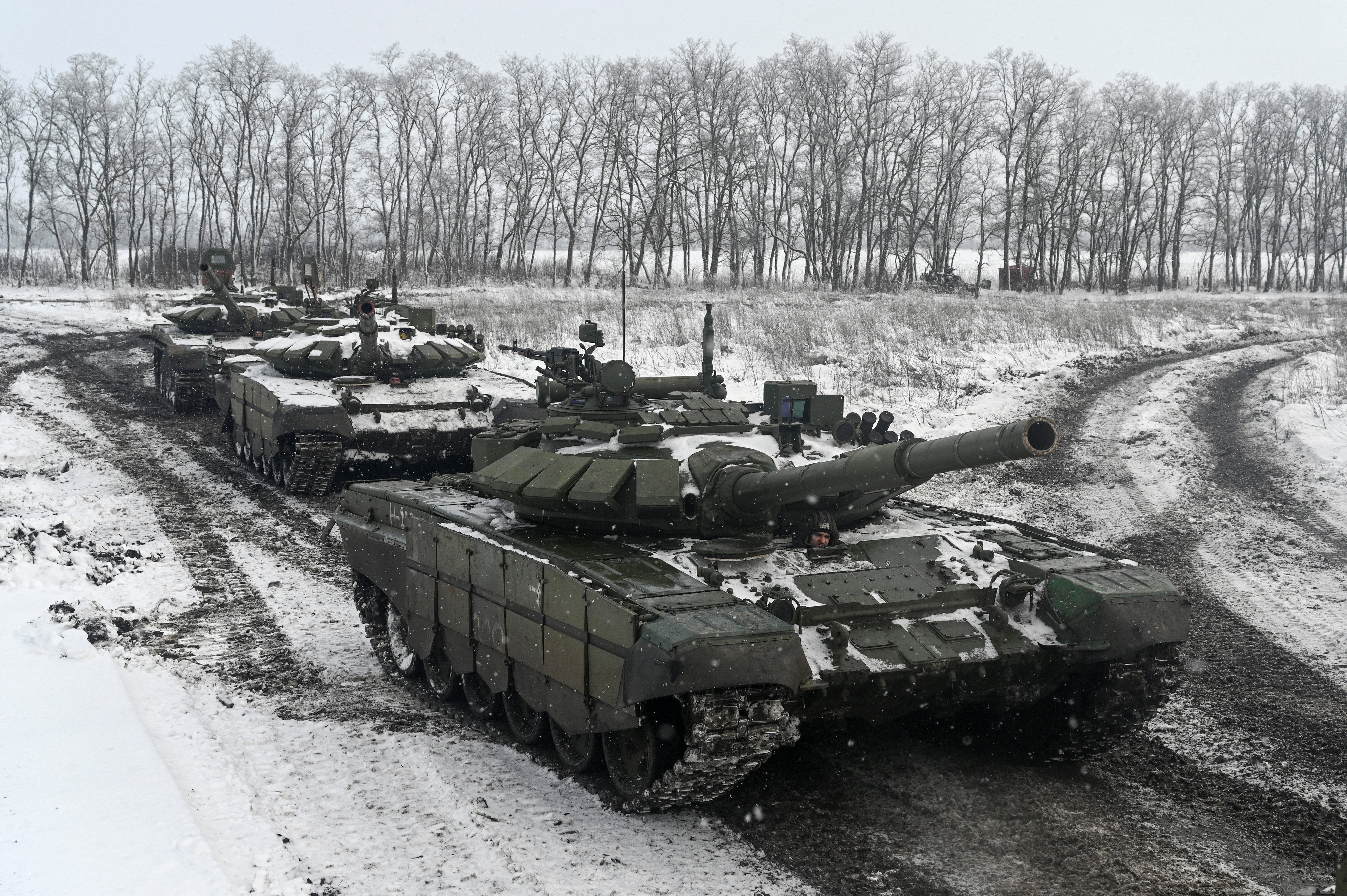Deadly attack by soldier fuels conspiracy theories in nervy Ukraine
Within hours of the fatal shooting, social media was ablaze with reasons for the attack, reports Kim Sengupta in Kharkiv


The shooting at the Makarov Yuzhny Machine-Building Plant in Dnipro was shocking and lethal. A young conscript had suddenly opened fire with his army issue AK-47 rifle, killing five soldiers and injuring five others.
The gunman, 21-year-old Artem Ryabchuk, fled. He was arrested a few hours later. The motives for his actions were not clear, say the authorities. Ukraine’s deputy interior minister, Anton Gerashchenko, announced that investigators would examine how the conscript passed a medical commission allowing him access to weapons.
But there was immediate traffic on social media from people who had apparently seen “proof” that the young man was a Russian agent. Some asserted that this was the first mission in a murder campaign which will follow.
That kind of reaction in the social media is perhaps unsurprising in the current uncertain and volatile scenario, with daily warnings of impending war.
But the narrative of a “hidden hand” sowing violence and discord, creating a “provocation” has been very much present throughout the Maidan protests of 2014, the separatist war which followed, and the outbreaks of strife which have taken place subsequently.
American and British officials have held in the current confrontation that the Russians will stage “false flag” attacks to justify military action. This theme has now been turned around and taken up with gusto by the Russians: in some blogs, but also in the mainstream media.
The disinformation campaign has gained rapid traction. Semyon Pegov, a blogger with 179,000 followers on the WarGonzo site, on the messaging service Telegram, has “revealed” that 150 members of British Special Forces have arrived for action at Kramatorsk in the Donbas.
“British specialists arrived at the military airport about a week ago, local residents often see them in the city, the British do not hide their affiliation,” he reported: “We’ve received intelligence accounts that Ukraine is training special groups. There are six of them. The British are directly involved with them as instructors.”
Mr Pegov went on to “expose” the incendiary activities of perfidious Albion, with his material now being picked up by the Russian broadcaster RT. The UK undercover troops were, he said, planning to sabotage social facilities and chemical plants in the separatist republics of Donetsk and Luhansk.
The operation, as described, would be somewhat convoluted. The British would carry out the attacks, according to an RT report, disguising themselves as Russian Spetznaz ( Special Forces), film themselves, and then disseminate the footage while a separatist defector, in reality an actor, would tell the western media that the Russians had carried out the “provocation”.
Another website, Red Spring, saw Recep Tayyep Erdogan as one of the orchestrators of the secret war. Turkish secret agents, it says, as well as the UK troops, are part of the clandestine mission.
The Turks are very much in the Kremlin’s crosshairs at present. Ankara has sold TB2 drones to Kiev and there is a deal for their production in Ukraine. The drones, which had been highly effective for Azerbaijan in its war against Moscow’s ally, Armenia, have already been used by the Ukrainians in the Donbas to destroy artillery of the separatist forces.
The tales of a British role in the clandestine conflict are perhaps, at least partly, due to British ministers, and parts of the media, repeatedly declaring that “British troops have been sent to the Ukraine”.
In reality, a small number of soldiers are here to train Ukrainian forces, including in the use of the 2,000 short-range missiles, NLAW (next generation light anti-tank weapon) which Britain has sent to Ukraine – something for which Ukrainians are genuinely grateful in their hour of need.
This, however, is not the only time that the role of “secret” UK forces have appeared in Ukraine’s conflict. One example from the past was six years ago, at the town of Andrievka, in the Donbas, when I was told with great certainty that British snipers had been at work against separatist fighters.
“The snipers on that hill were British. People have seen them. You could tell by their uniforms,” said a local man, Vitali Nelovich. “They were by the television tower. But even before they were stationed, there were others who came by helicopter. They were very dark-skinned”.
Another, Alexei Viktorovich was also adamant: “The dark-skinned men were very professional, I was in the army myself, so I could tell. They didn’t stay long, flew in and flew out.”

The dark skins of the men, the two men held, were obviously legacies of the British empire.
Incriminating evidence produced to prove British involvement was a combat jacket with a Union Jack on the sleeve, along with a panther’s head badge, something I recalled seeing while covering Operation Panther’s Claw in Helmand in Afghanistan in 2009.
“What is this? How do you explain this?” demanded a separatist fighter. I pointed out that one of his comrades was wearing a Manchester United shirt, and asked them to consider whether a hired gun was really likely to be wearing his national colours. The combat jacket had somehow, I suggested, ended up there after a long journey through army surplus stores.
The same combat jacket, however, appeared later on a YouTube video. A man in balaclava displaying it exclaimed: “Look at this chevron, a white lion!” Another man corrected him: “No, it’s a panther, an English panther.” The first man continued: “Yes, that’s right, English panthers; they are very close to the [Ukrainian] nationalists. They are very well trained. They came to kill us, but don’t worry, we will protect the public.”
Join our commenting forum
Join thought-provoking conversations, follow other Independent readers and see their replies
Comments
Bookmark popover
Removed from bookmarks